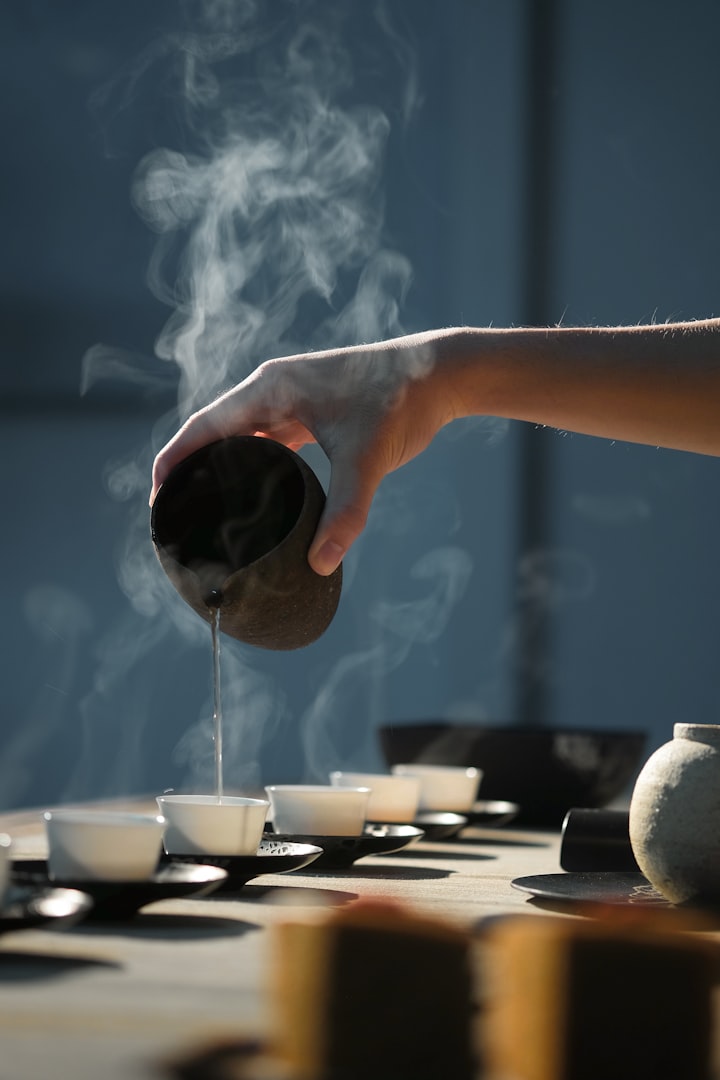Oridonin a potential anticancer agent
Naturally occurring anti-cancer compounds

Herbal medicine's been around for thousands of years! Indeed it has. And then we tested it all, and the stuff that worked became medicine. And the rest of it's just a nice bowl of soup and some pot pourri.
By Dara Ó Briain
Oridonin is an ent-kaurane tetracyclic diterpenoid isolated from the herbal tea Rabdosia rubescens (Hemsl.) Hara (family Labiatae), a native plant to the North-China, and known as Dong-ling-cao in China.
Many studies over the past decades have indicated that oridonin has anti-cancer activities in multiple cancers, including leukemia, lymphoma, osteosarcoma, myeloma, uveal melanoma, neuroblastoma, hepatocellular, laryngeal, esophageal and oral squamous cell carcinoma, lung, colorectal, breast (Source), gastric, pancreatic and prostatic cancers (Source: "Naturally occurring anti-cancer compounds: shining from Chinese herbal medicine").
So far, accumulating evidence has indicated that oridonin can modulate multiple biological functions by acting as anti-inflammatory, anti-bacterial, anti-fibrotic, auto-immune-regulatory and neuro-regulatory agent in diverse diseases.
The anti-cancer effects of oridonin include
- the induction of cell apoptosis,
- autophagy,
- cell cycle arrest and
- the suppression of angiogenesis, cell migration, invasion and adhesion.
In particular, oridonin induces apoptosis in human hepatocellular carcinoma, oral squamous cell carcinoma and laryngeal cancer cell lines. It also induces cell cycle arrest in human oral squamous cell carcinoma, gastric cancer, prostate cancer and breast cancer cell lines.
For example, oridonin can inhibit cell proliferation through bone morphogenetic protein 7 (BMP7) in human colorectal cancer cell lines. BMP7 has important biological functions in malignant tumours and is associated with metastasis and poor prognosis. Always in human colorectal cancer cell lines, oridonin can induce apoptosis via hydrogen peroxide production and glutathione depletion. Glutathione depletion can be deleterious for cancer cells and, potentially, enhance the effectiveness of chemotherapy and/or ionising radiations.
Oridonin is also shown to induce autophagy (for more about autophagy Source) in many cancer cells, and can suppress angiogenesis and metastasis (Source "Fighting angiogenesis with natural compounds backed by science").
For example, it can inhibit cell migration, invasion and tube formation in human breast cancer, human and murine melanoma, osteosarcoma and human umbilical vein endothelial cell lines, as well as tumour metastasis in hepatocellular carcinoma xenograft in zebrafish and mice, breast cancer xenograft mice and osteosarcoma xenograft mice.
Immunosuppressive effect of oridonin on activated microglia.
Oridonin has immunosuppressive effect which
- modulates microglia (the primary immune cells of the central nervous system) activation. The microglia becomes activated following exposure to pathogen-associated and/or endogenous damage-associated molecular patterns, and removal of the immune-suppressive signals. The chronic activation of microglia may in turn cause neuronal damage,
- enhances T cell proliferation (a part of the immune system that focuses on specific foreign particles),
- alters the balance of Th1/Th2 helper cells (the most important cells in adaptive immunity),
- reduces inflammatory cytokine secretion, and
- modulates an anti-inflammatory target, the B lymphocyte stimulator, critical for the maintenance of normal B-cell development and homeostasis.
Finally, oridonin also decreases inflammatory cytokine secretion in human pancreatic cancer cell lines.
The derivatives and analogs of oridonin usually exhibit more potent anti-cancer activities than oridonin.
For example, geridonin, is a novel derivative of oridonin, that inhibits cell growth and induces cycle phase arrest in human gastric cancer cell lines and xenograft mice. Oridonin phosphate, another derivative, has been reported to induce autophagy, by enhancing apoptosis in human breast cancer cell line. A novel analog of oridonin, CYD 6-17, inhibits tumour growth in bladder cancer xenograft mice and renal carcinoma (Source) xenograft mice.
In addition, a drug delivery system has also been developed to improve the bioavailability of oridonin. This new delivery system of inhalable oridonin-loaded microparticles exhibits strong pro-apoptotic and anti-angiogenic effects in non-small-cell lung carcinoma cells, and enhances the cellular uptake and exerts better anti-cancer effects in human hepatocellular carcinoma cells.
The combination of oridonin with other agents plays a potential role in cancer therapy.
AG1478, is a tyrosine kinase inhibitor specific for epidermal growth factor receptor, that in combination with oridin augments oridonin-induced apoptosis in human epidermoid carcinoma cell lines (a number of different types of cancer that result from squamous cells, on the surface of the skin, on the lining of hollow organs in the body and on the lining of the respiratory and digestive tracts).
Moreover, oridonin can enhance the pro-apoptotic activity of NVP-BEZ235 (is a dual phosphoinositide 3-kinase-mammalian target of rapamycin mTOR inhibitor) in human neuroblastoma cells through autophagy. Finally, the combination of oridonin and cetuximab (an epidermal growth factor receptor inhibitor used for the treatment of metastatic colorectal cancer and head and neck cancer) exhibits potent pro-apoptotic effect in human laryngeal cancer cell lines.
Thank you for reading 👓💙
And if you liked this post why not share it?
P.S.
The leaves of Rabdosia rubescens are still used for making tea in China.
For example, the patented tea No. 97116454.1 is used to treat pharyngitis and is made with:
- Rabdosia rubescens,
- Chrysanthemum,
- Radix Glycyrrhizae (Liquorice root) and
- Peppermint (Mentha balsamea Wild).
Another patented tea (CN102771597A), always for preventing and treating pharyngitis, is made with:
- Rabdosia rubescens,
- Fructus forsythia (the dried fruit of Forsythia suspensa),
- Angelica sinensis (commonly known as dong quai or female ginseng),
- Honeysuckle,
- Semen oroxyli (the seed of Oroxylum indicum) and
- Radix bupleuri (the root of Bupleurum chinense),
Add 2-4gr of the product to your cup and pour hot water over your tea. Infuse for three minutes and enjoy :-)
“Tea ceremony is like a concert or a ballet, in which all the participants are simultaneously the performer and the audience.”
By R. Corless (Anglo-American religious academic, Buddhist scholar, ecumenicist)






Comments
There are no comments for this story
Be the first to respond and start the conversation.